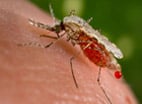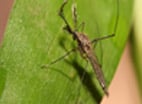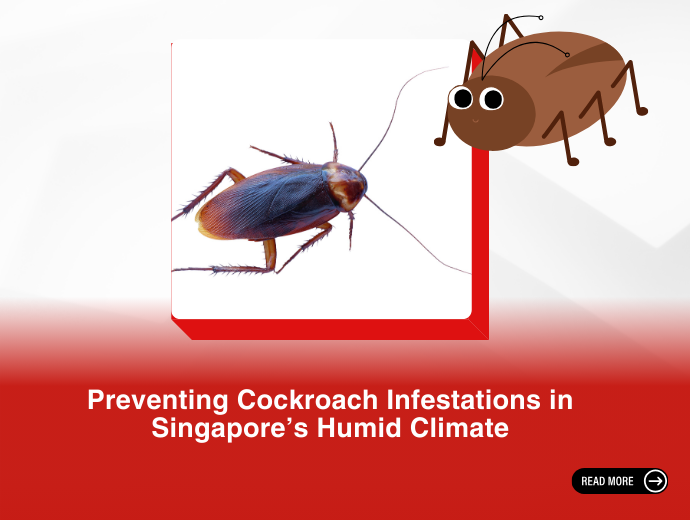Most of us are aware of the growing concern of dengue, both in Singapore and globally. New mosquito-borne viruses such as Zika are also emerging, leading health agencies to actively educate the public in prevention and elimination of mosquito breeding sites.
Mosquitoes are disease vectors, transmitting viruses from person to person through blood. In fact, more deaths are caused by mosquitoes than by any other animal on this planet! It is therefore of critical importance to manage the population of mosquitoes in urban areas, where small acts of neglect and carelessness in environmental cleanliness could lead to dire outcomes.
Identification of mosquitoes helps in detecting the diseases that could be transmitted, so that accurate prevention measures can be taken. The three common types of mosquitoes in Singapore are the Aedes, Anopheles and Culex mosquitoes. They can be easily distinguished from each other and transmit different diseases (Table 1).
| Type of
mosquito
|
Aedes

|
Anopheles

|
Culex

|
| Description |
Black and white-striped markings on legs |
Black and white scales on wings. Raised abdomen when resting |
Brown, with unspotted wings. Hunched back when resting |
| Diseases transmitted |
Dengue fever, Zika |
Malaria |
Japanese Encephalitis, filariasis |
| Preferred breeding site |
Clear, stagnant water |
Brackish water |
Polluted water |
| Position of larva in water |
Vertical to water surface |
Horizontal to water surface |
Vertical to water surface |
Table 1. Characteristics of three common types of mosquitoes in Singapore
Despite the different characteristics, treatment methods are effective against all species, thus the same treatment can be applied to different mosquito species.
Read More >> The Ultimate Guide to Mosquito Control
Treatment
Treatment methods are targeted either at the larvae or adult stages. In larviciding, Anti-Malaria (AM) Oil is poured into breeding sites. Since the larvae obtain oxygen through siphons sticking out of the water surface, oil blocks the siphons, hence killing the larvae through suffocation. One drawback of using AM Oil is that in the presence of wind or a sloping gradient, the oil is easily dispersed, rendering some spots cleared of the oil, hence enabling larvae survival.
Additionally, as AM Oil may stain surfaces, Temephos granules may be used instead. Temephos granules containing pesticide are sprinkled into stagnant water, affecting the nervous system of larvae. However, as both Temephos and AM Oil are location-specific, requiring treatment exactly at the breeding spots, it may be a time-consuming and tedious process, and spots at hard-to-reach areas may be missed.
A more efficient treatment method is the administering of Bacillus thuringiensis var israelensis (Bti), a microbe that specifically targets mosquito larva. Upon ingestion, Bti kills the midgut cells of the larva. Bti is administered through misting, thus covering large areas, including inaccessible or unseen breeding spots. It is also a sustainable method of pest control, as non-target species such as dragonfly larvae are unaffected.
Methods targeted at adult mosquitoes include thermal fogging, misting and cold fogging (Figure 1). Thermal fogging uses diesel as a diluent, whereas in misting, water is the diluent. Fogging covers a larger area, but is considered less effective than misting, especially in tropical climates where high heat and humidity will cause the fog to rise and quickly disperse, reducing its efficacy at targeted areas. Hence, fogging should be conducted preferably during early mornings or evenings. Furthermore, fogging poses a potential fire hazard, and should only be performed by well-trained personnel, with access to a fire extinguisher. Misting can deliver either large or small droplets. Large droplets adhere to surfaces, whereas small droplets can remain airborne for longer durations, targeting mosquitoes in flight.
Cold or ULV fogging uses insecticides diluted at ultra-low volumes, and thus can cover large areas quickly. Due to the small droplet size, absence of exhaust gases and minimal noise, cold fogging is suitable for use indoors. However, as indoor breeding areas can be easily spotted and eliminated, it is sufficient to focus on inspection, while treatment should be focused outdoors to eradicate mosquitoes at the source, and prevent them from entering the premises.

Figure 1. Treatment methods targeting adult mosquitoes include (from left): thermal fogging, misting, and cold fogging.
For adulticiding, it is recommended to conduct treatment once every two weeks. This is because it takes 8 - 18 days for larvae to become adults, hence fortnightly treatment would ensure that newly-emerged adults would be consistently eliminated.
Alternatively, some companies such as ORIGIN Exterminators offer two-in-one treatment, consisting of both Bti and residual pesticide. Bti targets mosquito larvae at hard-to-reach places, while the pesticide targets adult flying insects on the surface. This ensures the effective removal of both larvae and adult mosquitoes.
Mosquito Prevention

Needless to say, prevention is always better than the best treatment methods. There are several things you can do daily to prevent the breeding of mosquitoes in your home or workplace. This includes:
- Clearing drains and gutters of rubbish and leaf litter, and covering drains with wire mesh to prevent accumulation of stagnant water
- Overturning empty receptacles and containers
- Keeping fish in ponds
- Turning on water fountains
However, prevention alone may be challenging, as stagnant water might not be easily removable at some areas. Also, as mosquitoes require only a small amount of stagnant water to breed, potential breeding spots may be easily missed by the untrained eye. It is therefore recommended to have regular inspections of your premises by a professional pest management company to ensure it is completely mosquito-free.
References
http://www.vectorfog.com/what-is-ulv/
ORIGIN takes mosquito pest control seriously and offers a highly effective, environmentally-conscious, and family-safe treatment.









.png)
